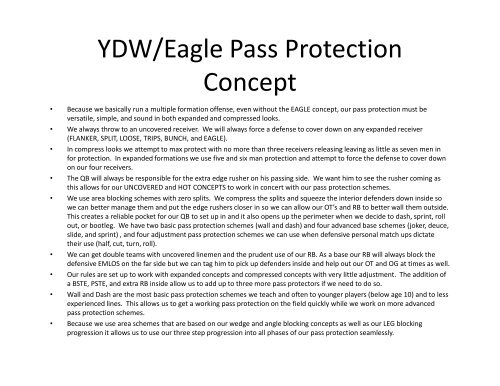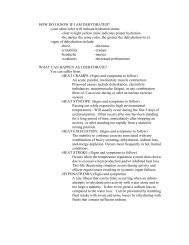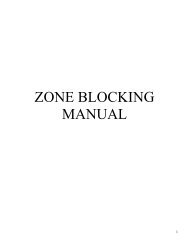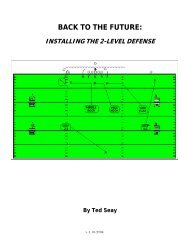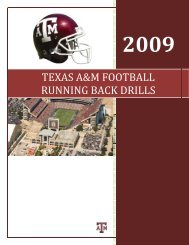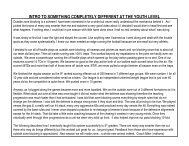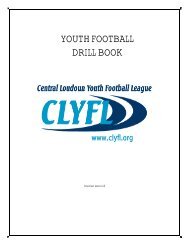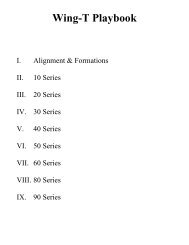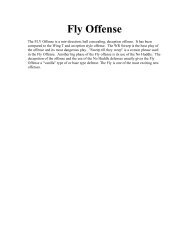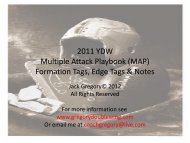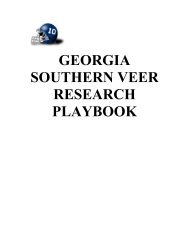Eagle Package 2011 YDWIII - Gregory Double Wing
Eagle Package 2011 YDWIII - Gregory Double Wing
Eagle Package 2011 YDWIII - Gregory Double Wing
- No tags were found...
Create successful ePaper yourself
Turn your PDF publications into a flip-book with our unique Google optimized e-Paper software.
YDW/<strong>Eagle</strong> Pass ProtectionConcept• Because we basically run a multiple formation offense, even without the EAGLE concept, our pass protection must beversatile, simple, and sound in both expanded and compressed looks.• We always throw to an uncovered receiver. We will always force a defense to cover down on any expanded receiver(FLANKER, SPLIT, LOOSE, TRIPS, BUNCH, and EAGLE).• In compress looks we attempt to max protect with no more than three receivers releasing leaving as little as seven men infor protection. In expanded formations we use five and six man protection and attempt to force the defense to cover downon our four receivers.• The QB will always be responsible for the extra edge rusher on his passing side. We want him to see the rusher coming asthis allows for our UNCOVERED and HOT CONCEPTS to work in concert with our pass protection schemes.• We use area blocking schemes with zero splits. We compress the splits and squeeze the interior defenders down inside sowe can better manage them and put the edge rushers closer in so we can allow our OT’s and RB to better wall them outside.This creates a reliable pocket for our QB to set up in and it also opens up the perimeter when we decide to dash, sprint, rollout, or bootleg. We have two basic pass protection schemes (wall and dash) and four advanced base schemes (joker, deuce,slide, and sprint) , and four adjustment pass protection schemes we can use when defensive personal match ups dictatetheir use (half, cut, turn, roll).• We can get double teams with uncovered linemen and the prudent use of our RB. As a base our RB will always block thedefensive EMLOS on the far side but we can tag him to pick up defenders inside and help out our OT and OG at times as well.• Our rules are set up to work with expanded concepts and compressed concepts with very little adjustment. The addition ofa BSTE, PSTE, and extra RB inside allow us to add up to three more pass protectors if we need to do so.• Wall and Dash are the most basic pass protection schemes we teach and often to younger players (below age 10) and to lessexperienced lines. This allows us to get a working pass protection on the field quickly while we work on more advancedpass protection schemes.• Because we use area schemes that are based on our wedge and angle blocking concepts as well as our LEG blockingprogression it allows us to use our three step progression into all phases of our pass protection seamlessly.


